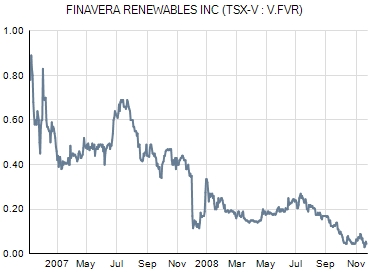

Wind, water, tide and garbage will power Van Isle
COMMENT: Not. This Pollyana-ish article may have a place in a marketing brochure, but it doesn't belong anywhere else. The Green Island Energy garbage burning plant is still a pipe dream, after six years now of promotion by its backers. In its first iteration, the pop singer Jewel provided funding and her family connections to the project, joining Gordon Campbell for a photo-op. It's difficult to say who looks sillier.

The Green Island project was originally pitched as a wood waste burning generation plant. When challenged as to where all this wood waste would come from, the company said it would barge it in from the entire west coast of North America, from California to Alaska. Nothing happened. Then the project re-emerged pitching itself to the then Greater Vancouver Regional District (now Metro Vancouver) as a garbage burning facility. Nothing has happened on that front, either, not unexpectedly, though Metro Vancouver has been talking about incinerating municipal waste in the Fraser Valley, and an application is now at the Environmental Assessment Office to expand the Cache Creek landfill. Green Island still talks a big story, and a mountain of construction and wood waste is apparently being stockpiled in Tahsis - not Gold River - but some of the old Bowater plant in Gold River is now a land-based fish farm.
In addition to the opposition a garbage-burning facility will face from those of us concerned about toxic emissions (drifting in all directions, including east into the Georgia Basin at times), there's the matter of a steady procession of barges crossing Georgia Strait, Haro Strait, running past Dallas Road, out the Strait of Juan de Fuca, and up the stormy west coast to Gold River. That'll be popular. Victoria will stop dumping its shit in the Strait, only to have it replaced by Vancouver's garbage.
As to Finavera Renewables, and wave energy, it doesn't have anything at all off the west coast of Vancouver Island. It's a company that really doesn't have anything at all, come to think of it. Like Sea Breeze, it has funded a lot of empty promises through issuing shares, but has nearly run to the end of that road. Its share price has tanked with this global economic collapse, and its only prototype wave energy generator, named Aqua-Buoy, sank a year ago off the coast of Oregon, and is still there, on the sea bottom.

And as for wind on Vancouver Island, there is a lot of it in some places, notably on the west coast and the north end of the island. My understanding is that the wind in these locations is gusty, rather than sustained and consistent as is the northeast (cited in the article) and Alberta. Transmission is another costly challenge for wind developers on Vancouver Island, as there ain't no power lines running the necessary hundreds of kilometers out in the remote bush. Perhaps a critical mass of wind projects can cost justify transmission, but that's the sort of thing that would take co-ordination and planning, and we haven't seen any of that from any of the wind farms proposed so far.
Business Examiner
November 17, 2008
Despite the recent decline in world oil prices, the volatility of the energy market has made it clear that alternative energy sources need to be developed and encouraged. There are several proponents of alternative energy schemes on Vancouver Island.
Were bidding on an EPA (Energy Purchase Agreement) to sell power to BC Hydro, says Russ Hellberg, vice president for community and government relations for Nahwitti Wind Power Ltd. Were hoping to be up and running by the summer of 2011.
The proposed project, located northwest of Nahwitti Lake, would generate clean, renewable energy from 42 wind turbine generators.These generators stand 125 metres tall, with propeller blades that span 45 metres, each turbine capable of producing 2.5 Megawatts (MW)enough to power 250 homes.
One of the challenges we face is siting the turbines, getting them built in fairly remote locations and positioning them to take full advantage of the wind to produce maximum power, says Hellberg.
BC Hydro has initiated a call for power to Independent Power Producers (IPP) and will commission 5,000 gigawatt hours per year of clean, renewable energy using proven technologies, such as hydro and wind. There will be a competitive bidding process involving independent power producers across the province and will help many new power generating projects to be built and become
The potential of wind power will soon be demonstrated near Chetwynd, where, by the end of next year, B.C.s first commercial windmill operation is expected to generate 144 megawattsenough power to supply 34,000 homes.
Vancouver Island generates only about 25 per cent of its own power, says Steve Davis, president of the Independent Power Producers of BC. The island is uniquely suited to develop these alternative energy sources. The wide range of generation resources in the region such as rivers, oceans, wind, and wood waste allow for the development and innovation of energy technologies.
While the coastal areas are suitable for the production of wind energy and tidal/wave power, interior areas have the resources to provide run-of-river hydro projects.
One of the first alternative projects to be built is the China Creek micro-hydro plant near Port Alberni. Since it went on the BC Hydro grid in 2005 it has provided a steady six megawatts. Says Judith Sayers, Chief Councillor of Hupacasath First Nation: When the plant operates at full capacity, it generates enough power to supply electricity to all the homes in Port Alberni.
Opportunities for biomass generation also exist throughout the Island. Biomass energy derives from the burning of organic materials such as garbage or forest-iindustry by-products such as wood waste and hog fuelboth plentiful on Vancouver Island.
The island biomass project furthest along is the Gold River Power Project, begun by Green Island Energy of Vancouver in 2003. Using the existing Gold River pulp mill site, the company expects operations to begin in 2009. Phase one will see a 45 megawatt boiler burning 350,000 tons per year of wood waste.
Phase two will see a 45-MW boiler that will burn 450,000 tons per year of municipal solid waste, shipped in from Oregon and California. Financial backing has shifted since the projects inception but is still in place.
Wave technology has huge potential but, as yet, no projects have secured approval.
Finavera Renewables, based in Vancouver, is currently testing offshore power plants in Ucluelet. These consist of buoys that conduct wave energy into a turbine that produces electricity. Clusters of these AquaBuOYs are moored several kilometers offshore where the wave resource is the greatest.
The electricity is sent ashore through an undersea transmission line. The company expects this facility to produce 5 MW of power.
Posted by Arthur Caldicott on 22 Nov 2008